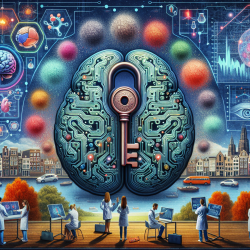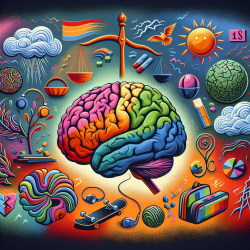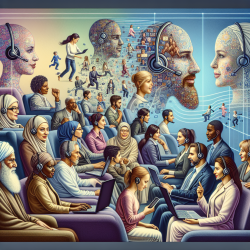Medical practitioners and researchers are constantly seeking ways to improve the analysis of electronic medical records (EMRs). With the increasing use of EMRs, extracting meaningful information from unstructured clinical texts has become a significant challenge. The recent development of the ContextD algorithm offers a promising solution for identifying contextual properties of medical terms in Dutch clinical texts. This blog post explores how practitioners can leverage ContextD to enhance their skills and encourages further research in this area.
Understanding ContextD: A Brief Overview
The ContextD algorithm is an adaptation of the ConText algorithm, initially developed for English texts, tailored specifically for Dutch clinical documents. It focuses on identifying three key contextual properties: negation, temporality, and experiencer. These properties are crucial for understanding whether a medical condition is present or absent, its timeline, and who experiences it.
- Negation: Determines if a condition is negated or not.
- Temporality: Identifies if a condition is recent, historical, or hypothetical.
- Experiencer: Establishes whether the patient or someone else experiences the condition.
The Impact of ContextD on Practitioners
By implementing ContextD, practitioners can significantly enhance their ability to analyze clinical texts. Here are some practical ways to integrate this tool into your practice:
- Improved Diagnosis Accuracy: By accurately identifying negations and temporal contexts, practitioners can avoid misinterpretations that could lead to incorrect diagnoses.
- Enhanced Research Capabilities: The anonymized and annotated Dutch clinical corpus created alongside ContextD serves as a valuable resource for further research and algorithm development.
- Streamlined Workflow: Automating the identification of contextual properties saves time and reduces manual errors in analyzing large volumes of clinical data.
The Path Forward: Encouraging Further Research
The development of ContextD opens up numerous opportunities for further research and exploration. Here are some areas where additional investigation could prove beneficial:
- Expanding Language Adaptations: While ContextD focuses on Dutch texts, adapting similar algorithms for other languages could enhance global healthcare communication.
- Improving Temporality Detection: The current challenges in accurately identifying historical and hypothetical conditions highlight an area ripe for innovation.
- Integrating Machine Learning: Combining rule-based approaches with machine learning techniques could improve accuracy and adaptability across diverse clinical texts.
The journey towards more accurate and efficient medical text analysis is ongoing. Practitioners are encouraged to explore these avenues and contribute to the evolution of healthcare technology.
If you're interested in diving deeper into the research behind ContextD, you can read the original research paper by following this link: ContextD: an algorithm to identify contextual properties of medical terms in a Dutch clinical corpus.










